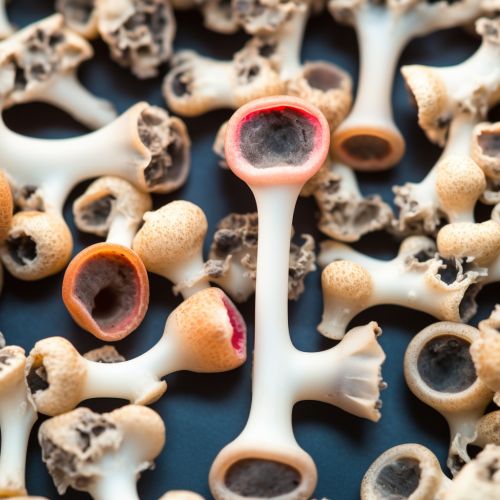Bone marrow
Anatomy and Composition
Bone marrow is the flexible tissue found in the hollow interior of bones. In adults, marrow in large bones produces new blood cells. It constitutes approximately 4% of total body mass in humans. The hematopoietic compartment of bone marrow produces approximately 500 billion blood cells per day, which use the bone marrow vasculature as a conduit to the body's systemic circulation. Bone marrow transplants can be conducted to treat severe diseases of the bone marrow, including certain forms of cancer such as leukemia. Additionally, bone marrow stem cells have been successfully transformed into functional neural cells, and can also potentially be used to treat illnesses such as inflammatory bowel disease.


Types of Bone Marrow
There are two types of bone marrow: red marrow (also known as myeloid tissue) and yellow marrow. Red marrow contains hematopoietic stem cells, which give rise to red blood cells, white blood cells and platelets. Yellow marrow is made mostly of fat cells. Both types of marrow contain numerous blood vessels and capillaries. At birth, all human bone marrow is red. With age, more and more of it is converted to the yellow type; only around half of adult bone marrow is red. Red marrow is found mainly in the flat bones such as the pelvis, sternum, cranium, ribs, vertebrae and scapulae, and in the cancellous ("spongy") material at the proximal ends of the long bones femur and humerus. Yellow marrow is found in the medullary cavity, the hollow interior of the middle portion of long bones. In cases of severe blood loss, the body can convert yellow marrow back to red marrow to increase blood cell production.
Function of Bone Marrow
The primary function of bone marrow is to produce blood cells. Hematopoietic stem cells give rise to the three classes of blood cells that are found in the circulation: white blood cells (leukocytes), red blood cells (erythrocytes), and platelets (thrombocytes).
Hematopoiesis
Hematopoiesis is the process of creating new blood cells in the body. All blood cells start off as hematopoietic stem cells, and then specialize or differentiate into the various types of blood cells. They become either lymphoid or myeloid stem cells. Lymphoid stem cells differentiate into T lymphocytes and B lymphocytes, which are responsible for fighting infections. Myeloid stem cells differentiate into red blood cells, platelets, and other types of white blood cells.
Mesenchymal Stem Cells
Mesenchymal stem cells are found in bone marrow and can differentiate into a variety of cell types, including: osteoblasts (bone cells), chondrocytes (cartilage cells), myocytes (muscle cells) and adipocytes (fat cells). This process is called osteogenesis. Mesenchymal stem cells are a major source of the cells used in bone and cartilage tissue engineering.
Diseases of the Bone Marrow
There are a number of diseases that can affect the bone marrow, including leukemia, aplastic anemia, and myelodysplastic syndromes. These diseases can affect the production of blood cells, leading to a variety of symptoms. In some cases, a bone marrow transplant may be necessary to replace the diseased bone marrow with healthy bone marrow.
Bone Marrow Transplantation
Bone marrow transplantation is a medical procedure in which damaged or destroyed bone marrow is replaced with healthy bone marrow stem cells. This procedure can be used to treat a variety of diseases, including leukemia, lymphoma, and certain types of anemia. The success of a bone marrow transplant largely depends on how well the donor's cells match those of the recipient.
